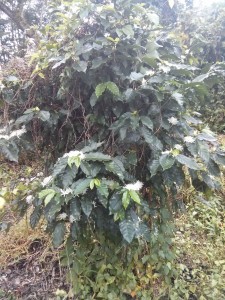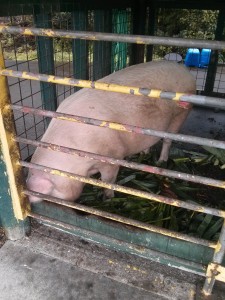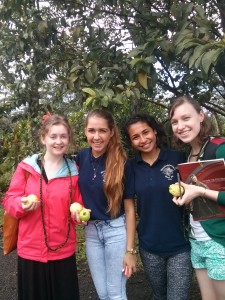While touring the school I noticed that every part of the students’ education somehow connected to the Hawaiian way of life. For example, on campus there is a large garden; there are guava trees, banana tress, a pineapple grove, coffee shrubs…students learn about these trees, when the season to pick the fruit are, how to pick the fruit and take care of the trees.
They also learn to take care of pigs that are kept on the grounds. In addition, our guides, Malia and Kamaile, both in 10th grade, explained that every Friday the whole school goes outside to learn about their surroundings, whether on campus or at the beach, where students can study ecology, biology, geology, etc.
The idea is that students learn by doing, hands-on, through a medium that is culturally relevant to Hawai’i..all of this done in the language, of course. I found another example of this in the classroom; in the back of every classroom is a corner with photos of students’ parents, grandparents and other family members. Our guides explained that having photos of their kupuna (ancestors) helps students remember why they are there; why they are learning the language and that they want to make their family proud as they will one day represent them out in the world. It is a way to make connections to language, culture, ancestry. This is only a small part of a larger, holistic approach to Hawaiian education, which is described in this following video: https://www.youtube.com/watch?v=lhELoIta084#t=163
He mana ko ka ‘ōlelo = there is power in language



